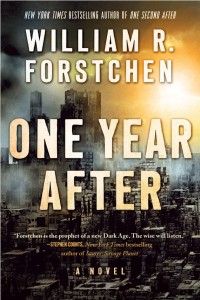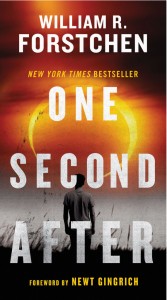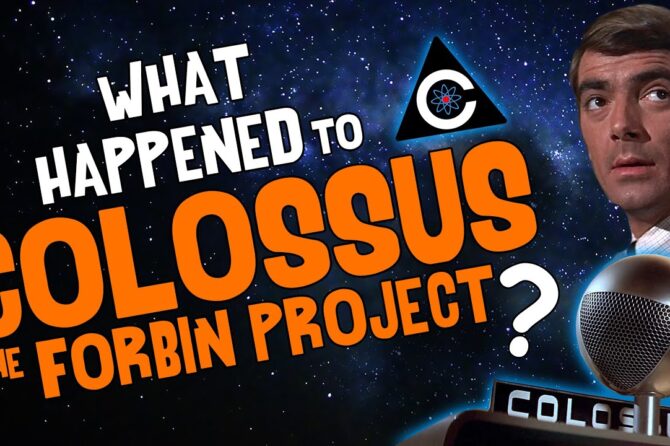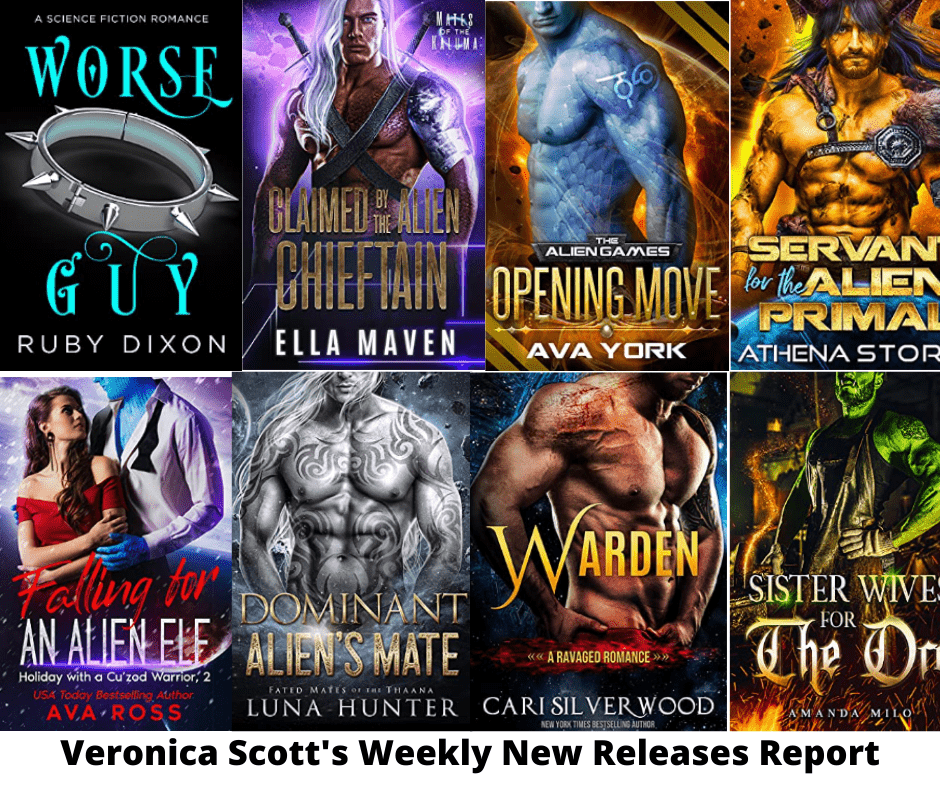 Preppers rejoice! With all of the doomsday books out on the market today, it’s not easy finding one with substantial material and enough insight to make such a dark future plausible. One Year After by William R. Forstchen does that and more.
Preppers rejoice! With all of the doomsday books out on the market today, it’s not easy finding one with substantial material and enough insight to make such a dark future plausible. One Year After by William R. Forstchen does that and more.
One Year After was released on September 15, 2015 from Forge Books (an imprint of Tom Doherty Associates, LLC). For those of you not familiar with the bestselling author Forstchen, he penned notable works like Pillar to the Sky which looks at the construction of a space elevator and We look Like Men of War about the struggles of going from slavery to soldier during the Civil War. To his credit, though not as poignant, he also collaborated with former Speaker of the House, Newt Gingrich to write a slew of alternate history books covering the Revolutionary War, the Civil War, and WWII.
One Year After is a book of many literary faces. This is a science fiction story of man’s ability to destroy everything we’ve built in the blink of an eye. This is a post-apocalyptic study of human endurance and the horrors of taking a step back as a civilized culture. This is a dystopian future and a warning to those who have a finger on the button. It is a horror story with real monsters that humanity faces every day. Oh, and this book is also a sequel.
 The stage was originally set in 2009 when the book One Second After made the New York Times best seller list for its first twelve weeks of publication. Following the electromagnetic pulse (EMP) from nuclear detonations high above the United States, the country is plunged into the dark ages and the social construction of what had once been a striving civilization finds itself fight amongst themselves in order to survive.
The stage was originally set in 2009 when the book One Second After made the New York Times best seller list for its first twelve weeks of publication. Following the electromagnetic pulse (EMP) from nuclear detonations high above the United States, the country is plunged into the dark ages and the social construction of what had once been a striving civilization finds itself fight amongst themselves in order to survive.
One Year After aptly takes place a year after the events in the first book. But in fact, 750 days have passed since “The Day” when all electrical elements seized to operate and humanity discovered just how dependent man was to the technological advantages of electricity.
The main character is John Matherson, a retired U.S. Army Colonel and professor of history at a small town college in Black Mountain, North Carolina. His knowledge and experience propelled him into the leadership role as the surrounding communities looked for leadership in One Second After. But in this installment, he has become more of an Atticus Finch type character with an influential moral center and an unlikely and sometimes unbelievable calming demeanor that often defuses the tensions of the plot. Though readers are given sufficient backstory to understand Matherson’s role better, those who have previously read the first book will gain a much clearer picture of the protagonist.
What makes One Year After so poignant is its approach to the “what-if” element we look for in science fiction. The idea is plausible and the aftermath is that of nightmares. But where author Forstchen shows his hand and takes his prophetic step towards a more political agenda is his insinuation that the current government has no contingency plan in place for such a disaster and the breakdown within the chain-of-command will be the downfall of the nation. While the character Matherson is shown with a lot of compassion and honor, the governing body is expressed more as a caricature of power.
This book also give substantial credence to the paranoid preppers who have anticipated the fall of government and would eventually become the strength of humanity that turns down oppression. Though a bit preachy at times, it is an eye opener for what can happen if all parties are left to their own devices. Don’t worry about the zombie outbreak to end civilization. Man will do well enough on our own to take us to the brink.
It should also be noted that, though the action is fast paced with an emphasis on tension, many of the primary characters elude harm while many others die in violent battles. The author should have followed the mold of the first book and displayed the emotion and horrors of such events by making everyone vulnerable. This kid-gloves mentality does diminish the tension at times.
One Year After is the post-apocalyptic story we hope never happens. Known more for writing works of alternate history, William R. Forstchen has written an alternate future (Is that a thing?) that could also be considered a blueprint for surviving the Dark Ages in the modern world. Though it is advised to read the first book before diving into this one if you want to gain emotional bonds with the characters, it is not a deal breaker. But if you can separate yourself from the forced political warnings, this can definitely be an enjoyable read that will make you think, make you wonder, what if.











Recent Comments